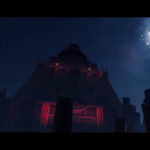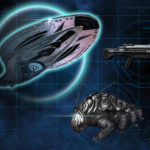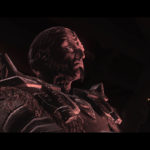
One of the things I have always admired about Star Trek Online is the fact that its writers know how to take a premise that seems blandly uninteresting and make it otherwise.
Let me be clear about something: Going into this new bit of STO storytelling launching with House Divided today, I had low hopes and expectations for another Klingon arc. It’s not really STO’s fault, in this case; the reality is that we’ve had a lot of Klingon stories, and the prospect of more of them wasn’t particularly stirring even with more use of the Discovery-era Klingons and associated politics. Not to mention that it already looked like it would be another Klingon civil dispute, which is a particular thing that Trek writers have used repeatedly…
I bring all of that up to point out that despite my first impressions of the idea being negative, the actual execution was something else entirely. Cryptic was kind enough to give me a head start on playing through both the new starting experience for Klingon captains and the two new featured episodes, and having done both, I have to say that my initial “meh” reaction was entirely eclipsed by the actual content.

Divisions of fear
The hard part in discussing the new arc is that there is a pretty significant twist in the second of the featured episodes that really recontextualizes the story, and I don’t want to give away the game. So you’re going to have to bear with my vagueness leading up to giving myself a paragraph or two of spoilers hidden behind a tag.
The start of the story, meanwhile, is nothing you haven’t seen before. J’Ula has opted to show herself before the Klingon High Council, issuing challenge to J’mpok and largely continuing on her crusade as if the intervening time between the 23rd and 25th century hadn’t happened. (Which, to be fair, they hadn’t for her.) It’s also clear that her ideals of a much more aggressive Klingon empire have support among more of the council than anyone would like, and while we’re not far off the launch of the Khitomer-class unified battlecruiser, it’s hard for everyone to fully accept the bonds between the Federation and the Empire have advanced to this point.
By now you’re probably nodding and thinking that this is all more or less boilerplate expectation based on the players involved and that it’s going to intensify before players ultimately stop J’Ula from her attempted coup. And the first episode definitely plays that aspect up… before throwing you a gigantic curveball that alters the entire stakes of what’s going on.
Click to reveal the spoiler section...I’m not going to spoil the ending here, but I will happily say that it ends up in a much darker place than I had expected. This is not a light-hearted “everybody laughs” ending; it’s a much harsher conclusion that leaves you at least somewhat adrift and waiting for where the story is going to go next. For that matter, it feels like something of an open question about where the story even can go; there are a lot of possibilities, but none of them is an obvious narrative endpoint for all this setup.
So, yes, this means that the writing team has taken one of the most frequently used tropes in Star Trek (Klingon civil war) and actually made it interesting and novel… and did so in such a way that it actually works well within the context of the various factions who might take part and with parts that wouldn’t work as well if this weren’t a video game. Good show, folks. And there aren’t even any tedious fights in the middle to pad out the run time! (Although there is one set of space battles that goes a touch long.)

Forged in blood
Finally, the developers found a way to plausibly make the Federation the bad guys here.
This is kind of the sticking point of early STO, I feel. The Federation, as a whole, doesn’t quite work as a villainous faction; there are parts of the Federation you can push there, but the overall philosophy doesn’t mesh well with villainy on a conceptual level. That means that it always seems as if the Federation is being done dirty by the Empire, and it’s why usually the villain in these pieces needs to be other Klingons or some outside faction altogether.
But in order for the early story to make sense with “Klingons don’t like the Federation,” you kind of need the Federation to actually be bad. And so you get a new tutorial in which the Federation, from the perspective of the KDF, is actually a bunch of conniving backstabbers who are willing to do some pretty questionable things because Klingon lives matter less than Federation lives.
As someone who has a bit more context (especially around the identity of the main Federation NPC involved) it’s obvious that what the Empire is thinking isn’t accurate; it’s the equivalent of treating Q like a Federation officer because he’s wearing the uniform. But character knowledge isn’t player knowledge, and it feels like a setup wherein you would legitimately think that the Federation was the bad faction even if as a player you now know better.
It also still works as an effective tutorial, which in and of itself shouldn’t be surprising; Cryptic knows how to make a tutorial work, after all. You get an idea of how Klingon politics and inter-ship disposition is meant to play out, you get introduced to the major players even though you are a low-ranking officer, and you still segue nicely into fighting to protect the Empire while exploring the nuances of culture. And while you still do have internal strife to deal with, it no longer feels like the villains of both factional storylines are Klingons regardless of your factional choice.
Ultimately, I liked it. I wouldn’t say that it’s going to completely rewrite you experience of the game if you previously disliked it, but if you’ve had trouble getting a Klingon captain going before now, maybe it’s time to give one another shot. The smoother experience definitely makes it rewarding.






















